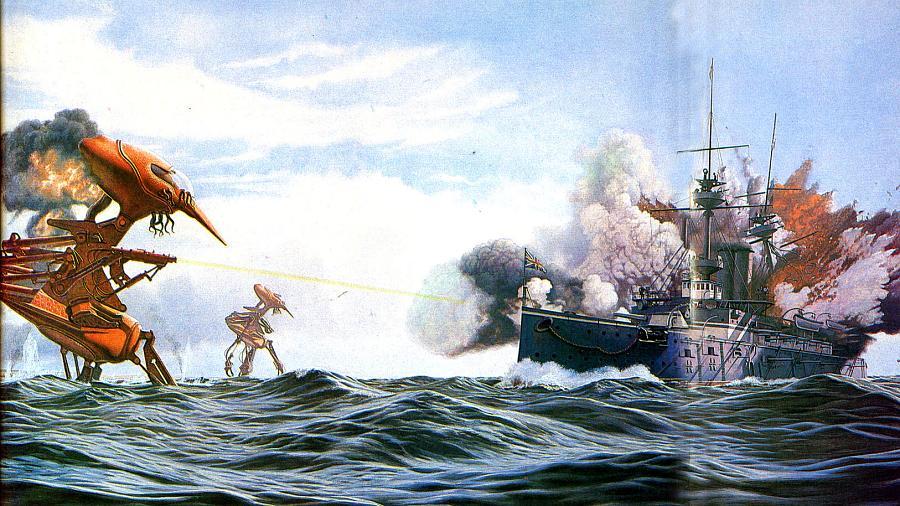... the narrative noted the lack of bending joints on the walkers, rather, they were described as being like telescoping antennae.
I did a search for real-world walking robots. There are robots with telescoping legs, and there are robots with three legs, but no robots with three legs that telescope. It seems, then, that a system of three telescoping legs wouldn't work.
Here are Wells' descriptions of the Tripods walking:
"A flash, and it came out vividly, heeling over one way with two feet in the air, to vanish and reappear almost instantly as it seemed, with the next flash, a hundred yards nearer. Can you imagine a milking stool tilted and bowled violently along the ground? That was the impression those instant flashes gave." [This describes how a Tripod in motion would appear at night if lit by a strobe. "Heeling over" is a nautical term meaning
lean over, list, incline, cant. So a tripod moving toward you would lean a little to the left, then to the right, and then to the left again - with one leg on the ground and two in the air with each swift, tilted advance.]
"... puffs of green smoke squirted out from the joints of the limbs as the monster swept by me." [Clearly, the legs are jointed.]
Wells was unhappy with the illustrations of the Tripod that accompanied the original magazine serialization. It seems he was especially unhappy with their jointless, stiff-legged appearance. So here's the text he added to the first book publication:
"I recall particularly the illustration of one of the first pamphlets to give a consecutive account of the war. The artist had evidently made a hasty study of one of the fighting machines, and it was there that his knowledge ended. He presented them as tilted, stiff tripods without either flexibility or subtlety, and with an altogether misleading monotony of effect."
Wells specifically criticizes the tilted look of the tripods in the illustrations. But he, himself, described them as "heeling over" when they walk. So he probably thought they tilted
too much in the illustrations:













